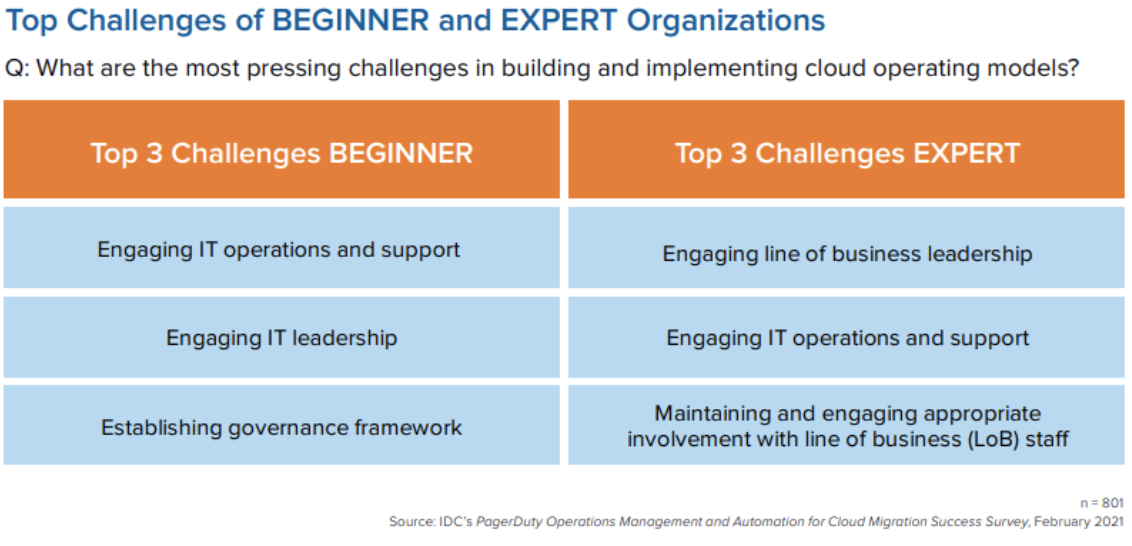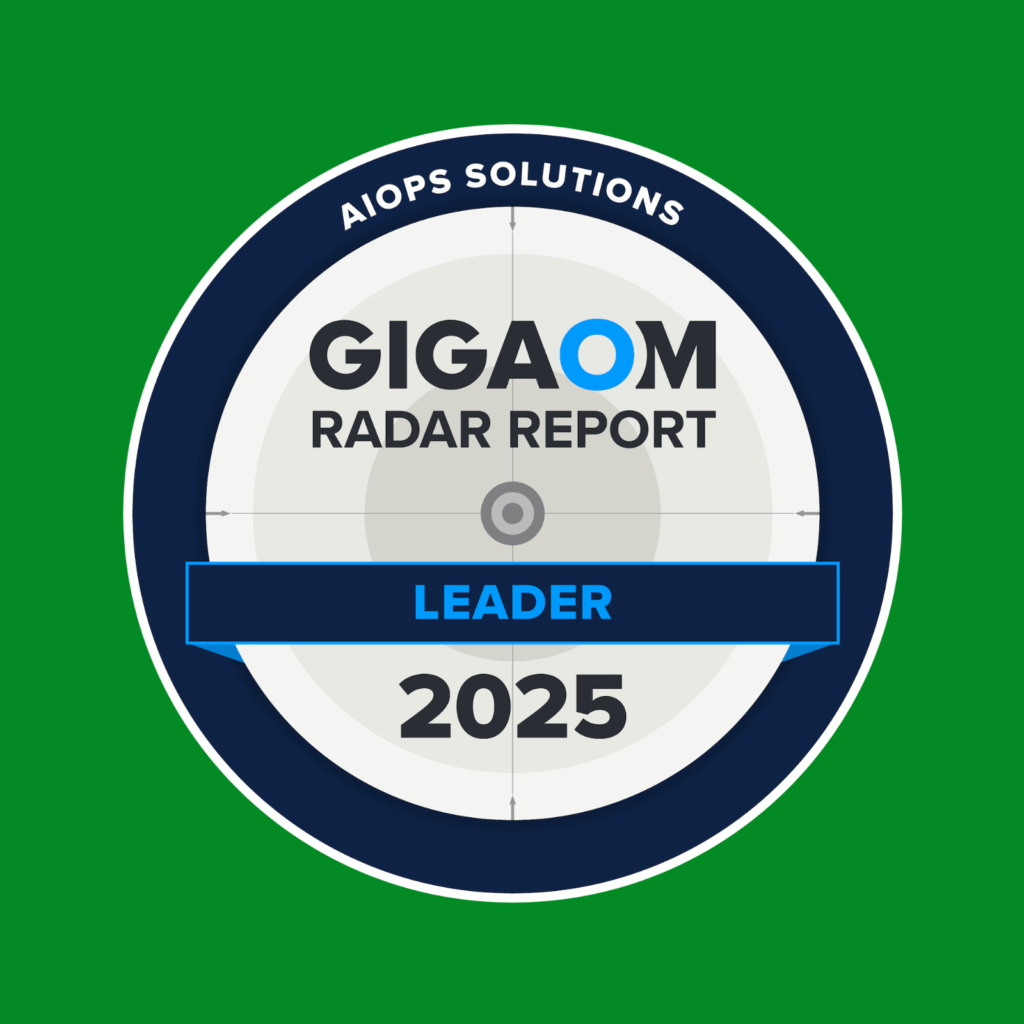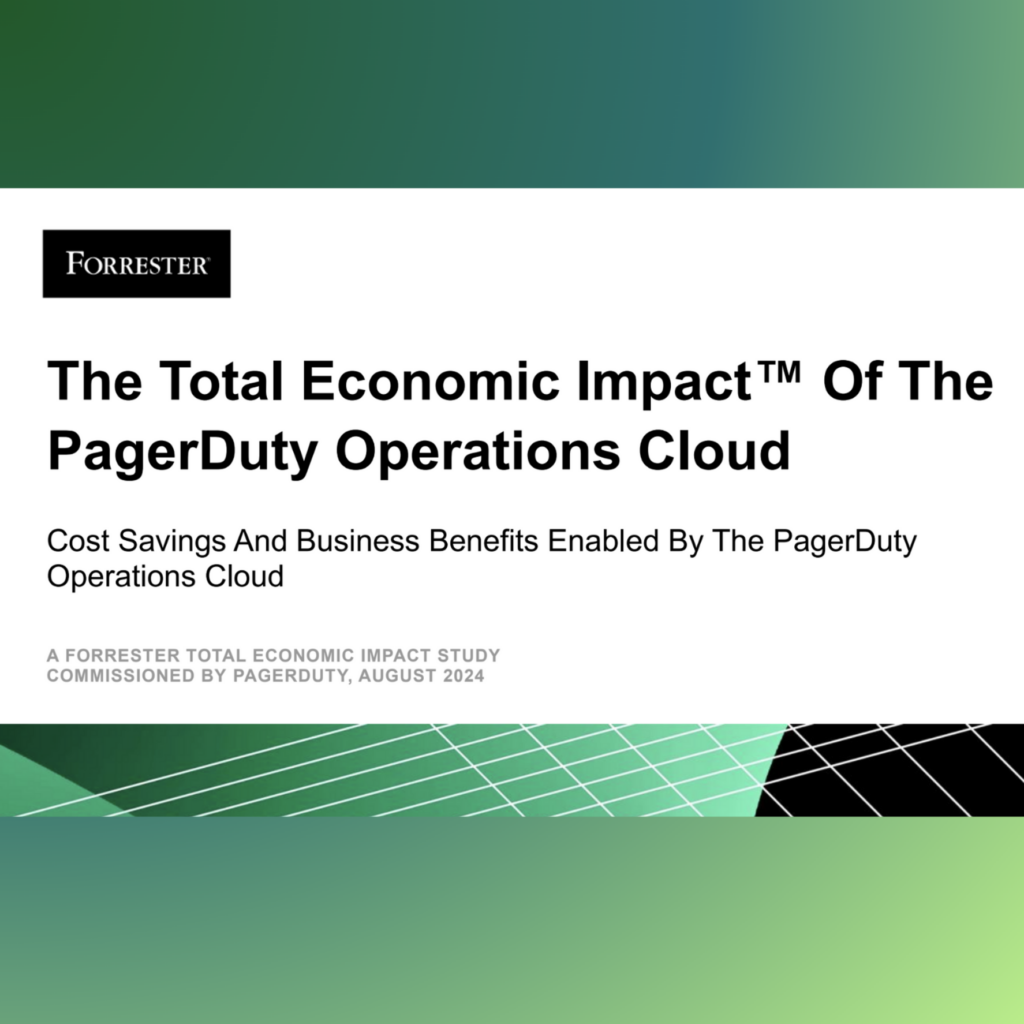- PagerDuty /
- Blog /
- Analyst Reports /
- Process binds technology and people in cloud maturity success
Blog
Process binds technology and people in cloud maturity success
This is the final blog in our series focusing on CloudOps maturity, where we’ve been looking at the key findings from a recent IDC study, commissioned by PagerDuty. In our previous blogs, we discussed the people-based transformations and the technological changes that organizations must undergo to mature their CloudOps practices. In this final blog, we will explore the role that processes play in tying technology and cultural changes as organizations move from Beginner to Expert on the CloudOps spectrum.
Processes – from governance and measurement to training and communication – are a pivotal component of success. They should not be an afterthought. Processes play a critical role in facilitating new ways of working, helping to align people with new roles and responsibilities, driving uptake of new technologies, and accelerating the adoption of new operating models. All of which are critical to improving CloudOps maturity.
Processes Change is an Evolution
No matter where you are in the cloud transformation journey, your organization’s processes must be modified in tandem to support the new environment. Hybrid cloud environments are more complex and dynamic in nature. There are more moving parts, everything in the cloud moves faster, making observability more complex.
As organizations migrate to the cloud, IT operations roles will change as organizations adopt methodologies like DevOps and Agile. Processes must keep up with these changes and adapt to the new ways in which people are working. Legacy ITOps processes designed for a centralized, on premises world no longer fit. Organizations need new CloudOps processes for a decentralized, hybrid cloud world.
Take governance as an example. When services were delivered via on premises infrastructure, governance processes were only designed to deal with a single monolithic architecture. These legacy processes can’t support the complex mix of cloud vendors and dependencies that exist in hybrid-cloud environments. Beginner-level organizations can start here, by putting in place new governance processes among existing decentralized or partially centralized IT departments for the management of their hybrid cloud resources.
However, changing your organization’s processes won’t happen overnight. A big part of the reason for this is people. People can be resistant to change. Routines are easy, and the unknown often isn’t appealing to everyone. Changes need to be gradual and exploratory. This will give your teams time to get used to new ways of doing things and to see the benefits as process changes begin to have a positive impact on their work.
Giving people power and ownership over processes is another component of successful process evolution. Keeping changes flexible is also important. Every organization’s culture and technology will be different. Getting new processes right on the first go is unlikely. Processes should continue to evolve and modify over time, always changing and improving to fit in with your organization’s way of doing things.
The Practical Steps to CloudOps Maturity
As your organization matures its CloudOps position, you will be adopting new operating models, including DevOps, Agile, and Service Ownership. Successfully embedding new approaches means existing processes need to be evolved and new ones created entirely. Particularly those around how teams work together, interact, and communicate.
At the Beginner stage, organizations are taking their first steps towards maturity, including getting started with DevOps and Agile. To progress, organizations should also improve and clarify the governance framework and processes for the federation between the CloudOps and other IT groups.
For those at the Intermediate stage, they should look to further clarify and centralize the federation of both the CloudOps platform and the CloudOps organization. Another key process milestone here involves creating an acquisition, development, and integration pipeline for Agile, CloudOps, Cloud Architect, and DevOps resources. Measurement will also come into play; beginning to measure key behaviours rather than key process indicators like Mean Time to Resolution (MTTR). Intermediate organizations must also experiment with service ownership, to develop the skills and processes that will become important as they transition to Advanced.
To then achieve the end goal of becoming an Expert, organizations need to fully and formally adopt Full-Service Ownership processes. They must also focus on expanding the remit of DevOps and CloudOps to include Chaos Engineering. One other critical process evolution here includes strengthening a blameless post-mortem process, and using incidents as a continuous training opportunity.
Finally, even for Cloud Native organizations, there are process improvements that can be made. For example, focusing on the development of a stable service ownership model, organizing existing IT operations tools into a single CloudOps platform, and applying 3D negotiation skills to internal governance and processes changes.
Top-Down Leadership is Key
As outlined above, reaching cloud maturity involves a huge amount of change and many moving parts. It is also a major corporate shift, rather than solely an IT change. Two of the most important drivers for change are “alignment with IT restructuring” and “alignment with corporate restructuring”.

Changes of this magnitude need strong leadership. Aligning IT with the business requires good communication, accurate measurement, and a shared understanding of goals. However, our study found that in every direction, there are communication barriers that hamper progress to CloudOps maturity. For Beginner organizations, “engaging IT leadership” was cited as one of the top three challenges to building and implementing cloud operating models. Equally for Expert organizations, “engaging line of business leadership” was identified.

Top-down leadership is critical in ensuring the right processes are in place two facilitate two-way communication and engagement. Without the buy-in of all stakeholders, process evolution won’t be successful. While change can be organic and employee-driven, it also requires commitment and a charter from executive leadership. Change must happen across the organization to take advantage of CloudOps at scale, create business results, and accelerate through the maturity phases.
To read the full IDC White Paper PagerDuty commissioned, download the whitepaper “Cloud Operations Maturity Assessment, 2021: Key Attributes and Behaviors that Differentiate Beginners from Experts”.


